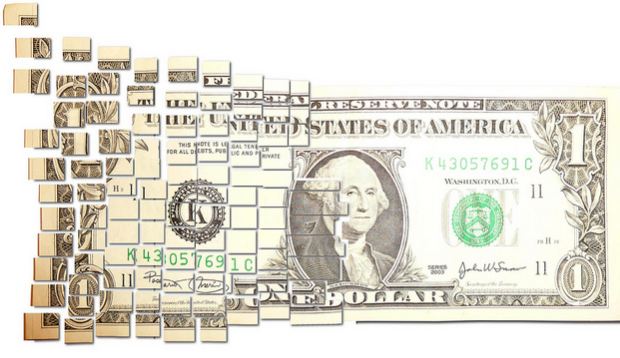Blockchain – Central Banks Banking On Blockchain
“The root problem with conventional currency is all the trust that’s required to make it work. The central bank must be trusted not to debase the currency, but the history of fiat currencies is full of breaches of that trust …†– Satoshi Nakamoto (Unknown person or persons who designed bitcoin and created its original reference implementation, Bitcoin Core)

Source: Photosteve101 via Flickr
Fiat currency debasement and failure is why gold has survived and thrived for thousands of years and indeed in recent years. It is why bitcoin is becoming more popular, with its growing market cap and ever-expanding ecosystem.
It is hard for central banks to dictate the value and supply of gold in the long term; they have tried and failed. This was seen during and after the London Gold Pool when gold prices surged from $35 to $850 in just 9 years and again in recent years when banks were found to be attempting to fix and manipulate gold prices. Manipulation frequently works in the short term but over the long term, the all powerful forces of supply and demand in the global marketplace will determine prices.
Similarly, it will be hard for central banks to dictate the value of bitcoin over the long term. Akin to gold, very limited supply and increasing global demand should determine prices rise in the long term.
Thus, both operate almost trust-less monetary policies and have a value in and of themselves, regardless of central bank diktats.
As it is both nature and human nature that supports gold, it is a blockchain that supports bitcoin. The bitcoin blockchain was designed so that no central bank would ever be needed to support the currency.
The bitcoin network is the bitcoin central bank, it creates new bitcoins and processes the transfer and settlement of the cryptocurrency. Monetary policy was set on day zero and its independence comes from its decentralisation.
Whilst the idea of no central bank is too much for many, you can be sure it is certainly too much for the central bankers themselves. After all, the breakthrough with bitcoin is that it is cryptography that secures it, not the force of an overarching central body. Bitcoin’s success has promoted the conversation as to how central banks can keep up, and take advantage of the technology in order to keep their monetary games going and further kicking the ‘fiat currency can’ down the road.
Central banks now want in on their own adulterated version of blockchain. It seems they have realised that they must embrace it in order to prevent their own demise.
Today, we take a brief look at why central banks are so keen to embrace the technology that was seemingly designed to render them the dodo of finance. In part two, next week we will address the concerns surrounding these apparent benefits.
Big on blockchain
15% of big banks will be using blockchain by the end of this year, according to the IMF and ‘most’ banks shortly after say the World Economic Forum (WEF). Driven by enthusiasm in the private sector, 2016 was the year the central bankers across the world woke up and began to talk about their explorations into, and the possibilities, of blockchain in the central banking system.

